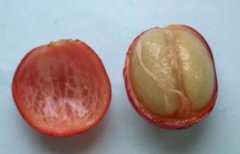Introduction of Japanese Coffee Culture basic knowledge of Fine Coffee
Today, Japan has become the world's third largest importer of coffee, after the United States and Germany, importing 400000 tons of unroasted coffee beans in 2000 alone. Young people in Japan regard going to cafes as part of urban life, and the lifestyle of little bourgeois is also very popular in Japan. Since the 1990s, cafes have gradually formed a unique scenery on the streets of big cities in Japan. However, most cafes in Japan do not transplant the characteristics of European and American cafes as they are. Although Japan seems to be the most loyal proponent of the trend of internationalization, Japanese cafes are more likely to show the collision of Eastern and Western cultures. During the period of Japan's bubble economy, countless Western things poured into Japan, and tourists from all over the world traveled to Japan every year to learn about the country and bring new cultural elements to the country.
Japan seems to be a big sponge, which has a strong ability to absorb and digest multiculturalism. The Japanese have the ability to localize foreign cultures. Japanese cafes are a good example. Cafes are the places with the most mixed cultural characteristics in Japan. Japanese cafes are usually designed with unique design, easy interior decoration, and a combination of functional and multicultural features, in addition to providing drinks and simple food. Cafes are usually designed as places for learning, reading, talking and making friends. Moreover, the drink list of each cafe will be updated in a timely manner, and even regular customers can make new discoveries at any time.
As a compromise of cultural integration to the traditional way of life, green tea is still sold in many cafes in Japan. Japan is a big consumer of green tea, consuming about 100000 tons a year. Even young people who love Western culture love green tea at the same time. Therefore, it is very common and reasonable to provide green tea in cafes.
The Japanese use charcoal fire to bake coffee, which mainly uses the radiation of charcoal fire to heat the coffee evenly from the inside to the outside, thus effectively avoiding the destruction of coffee tissue structure. In the words of the Japanese themselves, this method has the original infrared effect.
Although Japan does not produce coffee, the coffee industry has its own unique features. They bring in tools invented in Thailand but not widely available, re-analyze them, improve them and sell them. Dutch (an instrument for extracting coffee with cold water) invented by the Dutch is also favored by the Japanese. Appliances that are rare in the Netherlands are not difficult to buy in Japan. Japan has also imitated the world-famous "Melita filter" to make a comparable "Karita filter". In addition, Japanese coffee grinders, seals, improved "Siphon" (the name of siphon pipette) and even household roasters are all "Japanized" in a unique way.

Important Notice :
前街咖啡 FrontStreet Coffee has moved to new addredd:
FrontStreet Coffee Address: 315,Donghua East Road,GuangZhou
Tel:020 38364473
- Prev

The Cultural Story of Coffee Development "Blackwater"
In the eighth century AD, there was a magical black water called Qahwa in the Arabian Peninsula, which was said to restore physical strength, exuberance, and no sense of purpose. The tenth century Muslim philosopher and Iranian doctor Avicina Ibn Sina,980-1037 recorded a plant from Yemen called Bunchum, which is said to be something like coffee. As early as
- Next

The Development History of Coffee Culture in Japan
Coffee first entered Japan, brought by Dutch missionaries and merchants around 1630, when the Dutch desperately promoted coffee to their Asian colonies of Sri Lanka and Java, India. But the Japanese don't accept this weird drink at all. It was not until the Meiji Restoration that Japanese society began to learn from the West that people gradually accepted the advanced West.
Related
- How did the Salvadoran coffee industry develop in Central America?
- What exactly does the golden cup extraction of coffee mean?
- The Origin of Coffee flower
- [2023 Starbucks World Earth Day] there are more meaningful things besides free Starbucks coffee!
- What kind of coffee is there in Spain? 9 Flavors of Spanish Coffee
- Aromatic African coffee| Kenya's coffee culture and historical production area
- Liberica Coffee Bean knowledge: the characteristics of Liberian Coffee beans of the three original species of Coffee beans
- The origin and formula of Spanish latte introduces the taste characteristics of Bombon coffee in Valencia, Spain.
- How to adjust the solution of over-extracted coffee
- What is the tasting period of coffee beans? What is the period of coffee and beans? How should coffee wake up and raise beans?

